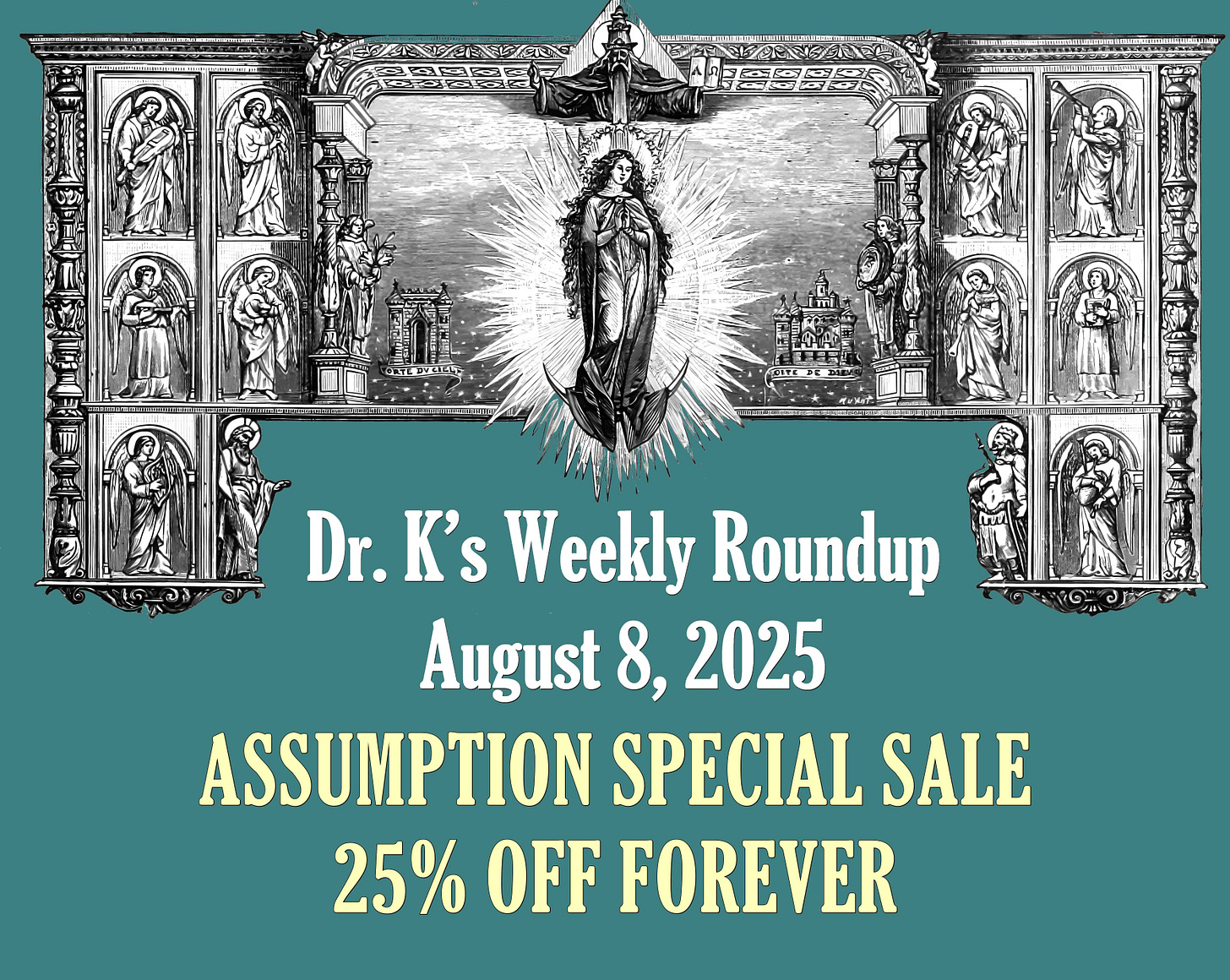Weekly Roundup, August 8, 2025, and ASSUMPTION SPECIAL (25% OFF)
ASSUMPTION SPECIAL
Truly I could not run this Substack without the 8.8% of readers here who are paying for a monthly or annual subscription to Tradition & Sanity, or who have joined as patrons. Thank you and, truly, God bless you!
The rest of the readers (now close to 14,000) are benefiting from the core group that supports this mission and makes it feasi…
Keep reading with a 7-day free trial
Subscribe to Tradition and Sanity to keep reading this post and get 7 days of free access to the full post archives.



